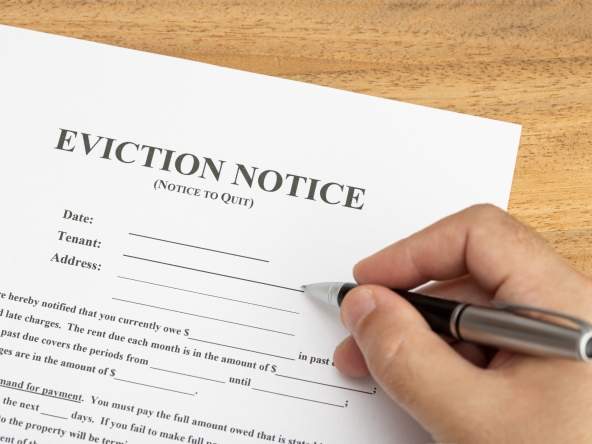California’s housing situation has never been more uncertain. Since the start of the 2020 pandemic, more and more Californians are struggling to make ends meet, which can be seen especially in the housing market.
It’s been estimated that as many as 239,619 households in California will be unable to pay for their rent, leading to a whopping $1.67 billion in debt. In response to these grim numbers, the state has pushed to pass bills that will further protect residents.
Though the state has made a number of changes to the eviction process to help prevent countless residents from being evicted, a lot remains up in the air, as governmental officials debate the best plan of action.
As such, it’s unclear what California plans on doing to protect its citizens, and how those protective measures will impact renters, sellers, and landlords. If you’re unsure of how the new laws could affect you, here’s the intel on California’s new eviction process.
Tenant’s Rights
California has made sweeping motions to protect its tenants’ rights during the onset of the pandemic. At the end of August, Governor Gavin Newsom signed a legislative bill to prevent millions of tenants from being evicted for payments that were due between March 1st and August 31st of 2020. This bill also protects property owners who would otherwise be facing foreclosures in response to the 2020 pandemic.
Though you can’t be evicted or face foreclosure for payments during that time frame, you can still be sued by a landlord via small claims court. This won’t be permitted, however, until after March 1, 2021.
New Eviction Laws
California’s new laws have specific requirements that must be met, as well as eventual financial responsibility on the tenant’s part. Under the new legislation, a tenant is unable to be evicted for failing to pay rent before February 1st, 2021. However, they must prove that their inability to pay rent was because of a COVID-19-related hardship that took place between the 4th of March and the 31st of August, 2020.
Tenants must also follow the correct steps for providing a declaration of hardship, and within the correct timeline. Failure to meet these requirements may mean failure to have eviction waved.
In addition, for any COVID-19-related hardships that took place from September 1, 2020 to January 31, 2021, tenants must pay landlords a minimum of 25% of their rent if they want to avoid eviction. Starting on March 1, 2021, the tenant will have to pay the amounts that were temporarily waved.
Many Bay Area officials are concerned that this legislation isn’t enough, however. Come February 2021, there is a major risk of exponential homelessness and increased risk for COVID-19 spikes, leading government officials questioning what to do come February.
Some officials are pushing a pair of bills to further extend the eviction protection through 2021, while also creating financial assistance programs to help smaller landlords get through the year.
What Is the Current Home-Buying Process?
Though California has seen a major decrease in home buying due to the new stay-at-home orders and uncertainty regarding the COVID-19 pandemic, it is still possible for you to buy a home in the state. Below, we’ll cover just how you can purchase a home in California during these unprecedented times.
While you can still buy a home in California, a lot has changed in response to COVID-19. Here are the most notable changes in the home-buying process:
Pre-Approval
To reduce the number of people looking to tour a home, many California agents or sellers are now only letting those who have written documentation of a mortgage pre-approval schedule a touring. In many cases, having a mortgage pre-approval letter from your bank will increase your odds of getting the house you want because it shows your financial security.
Therefore, it’s a good idea to get pre-approved for a mortgage in California. If you are unable to for any reason, though, you should check with your agent to see if it’s required prior to inquiring about a home to avoid getting emotionally invested in a house you really like.
Virtual Communication
Gone are the days where one simply walked into a real estate agency or phoned up a “For Sale” sign’s number in the hopes of meeting in-person to discuss home buying. Instead, realtors, sellers, and prospective home buyers alike are resorting to virtual forms of communication to dish out the details of a showing.
Virtual Tours
Agents have adjusted to the virtual platforms for home listings by having virtual tours and high-quality photos to help paint an accurate picture of home listings. This is done to reduce the number of scheduled tours.
However, if you do end up scheduling an in-person tour, California real estate agents generally have hand sanitizer on hand and shoe coverings to accompany mask wearing and ensure safety. The most diligent of agents will also have all doors open in the home so that there is ample ventilation and you don’t have to touch high-traffic objects to view the home.
In some instances, you will only be able to virtually tour a home to decide on whether or not you want to live there, as some real estate agents or home sellers in California want to avoid all foot traffic.
Making the Most Out of Challenging Times
California is likely to face major eviction challenges in response to COVID-19. Knowing your rights as a tenant, and taking the necessary action to prevent yourself from being evicted, are important.
Though the housing market is uncertain, you can still buy a house in the Bay Area following the new guidelines and safety measures.
If you’re a landlord, you can avoid litigation or similar problems like this by hiring us, the Cal Agents, as your property manager.





